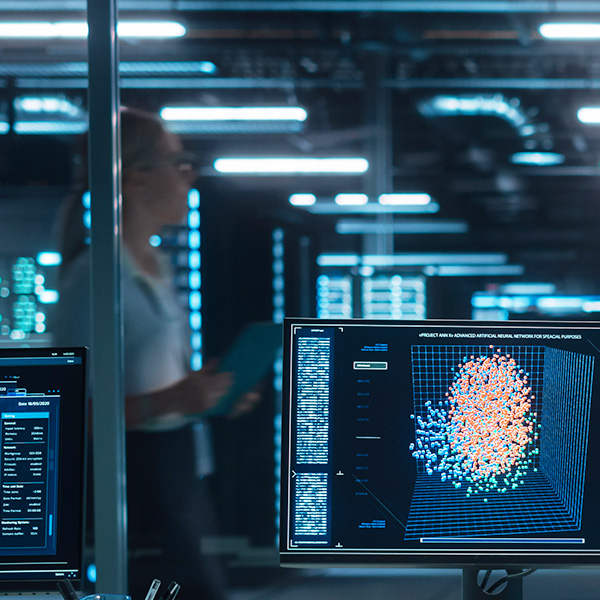
Are you ready to get started?
To learn more about how Wesco can help you optimize next-generation wireless technologies, contact us today to schedule a wireless solutions consultation.

ARTICLE
By Donna Yates | April 11, 2024
Read Time: 4 Minutes
Welcome to the second in a series of articles discussing wireless technology in the healthcare industry. Throughout this series, we will cover the benefits of having a strong wireless network in your healthcare facility. In this edition, we focus on the importance of wireless connectivity to those who work in the healthcare field.
Access to next generation wireless connected devices equips healthcare providers with the right tools to have a profound impact on the industry and help hospitals achieve greater efficiencies and provide optimal patient care.
While patient satisfaction is of utmost importance to these facilities, attracting and retaining high-quality staff is a crucial factor in helping to achieve those high ratings. Healthcare facilities who are investing in wireless networks are going to attract the best and the brightest to their staff.
When hospital personnel are being asked to deliver quality care to an ever-growing number of patients, wireless technology is helping to effectively meet those increasing demands while at the same time helping to improve staff efficiency. Some of the areas where wireless technology is helping simplify their responsibilities include:
Wireless connectivity plays a crucial role in patient onboarding, it helps facilitate patient check-in, appointment scheduling, access to test and lab results and can be utilized by patients to send and receive communications from healthcare providers. While patient onboarding can be time consuming, introducing wireless-based technology can help supply the staff with more time to focus on other responsibilities and provide exceptional care to their patients.
By incorporating wireless technologies into the storage and compilation of patient medical records, it delivers an easily accessible digital platform for healthcare providers to record patient data, diagnosis and treatment notes, review information that can be easily shared with other healthcare providers, provide a patient portal for communications, easily track screenings, vaccinations and other tests, and monitor and improve overall quality of care.
Wireless technology allows healthcare professionals to remotely monitor multiple in-house patients simultaneously from a nurse’s station or monitoring center. This not only allows staff to focus on direct patient care but also ensures they have real-time information to quickly respond to any immediate needs.
Remote monitoring, or telemedicine, is also allowing healthcare professionals to optimize patient treatment outside of the traditional hospital setting. Wireless medical devices are making it easier for doctors to have access to real-time medical information from patients that are unable to physically come in for an appointment. From patients in rural or underserved areas, to those with limited mobility or access to transportation, caregivers can be more efficient and make data-drive decisions that allow them to provide personalized treatment plans and care.
With real-time access, healthcare professionals and specialists in multiple locations can view and discuss a patient, review imaging and diagnostics, and enable innovations in healthcare delivery. Having the ability to share real-time data allows many departments within a facility or in other locations to have access to vital information to provide immediate and informed treatment.
Wireless-enabled medication management is helping staff reduce medication errors and ensure accurate administration and patient safety. Barcode scanning that is integrated with wireless medical devices helps streamline the delivery of medications and allows healthcare providers to be more efficient and accurate.
Using wireless technology that delivers seamless connectivity inside healthcare facilities can help to ensure medical personnel are kept safe in real-life working conditions. There are several devices that can be used as part of a comprehensive security plan to help employees feel safe and protected. These include workstation alarms, biometric locking systems, access controls, mass notification systems, CCTV, and specialized RFID tags that can be worn in a wristband or lanyard. Wireless devices can help provide immediate response to staff members who are experiencing a threatening security emergency.
While we talk about patient satisfaction scores, we must take into consideration the role that employee satisfaction plays in the quality of care and overall success of any healthcare organization. With healthcare providers demanding quick access to real-time information and dependable communications solutions, access to this reliable wireless network is imperative to talent acquisition and retention strategies for healthcare organizations.
Wesco’s experienced team can help your healthcare facility stay connected and run smoothly with robust and innovative wireless solutions to ensure your network can support critical systems and meet employee and patient expectations. From DAS to small cell, private LTE/CBRS networks, WiFi, and public safety systems, Wesco can provide a comprehensive portfolio of end-to-end wireless technologies that meet the challenges of today and the demands of the future.

ABOUT THE AUTHOR
Donna Yates
Donna Yates is a freelance writer with over 25 years of experience generating marketing strategies, programs, and collateral specifically focused on global service providers and the utility, broadband, and wireless markets.
To learn more about how Wesco can help you optimize next-generation wireless technologies, contact us today to schedule a wireless solutions consultation.